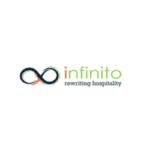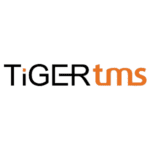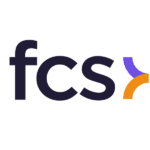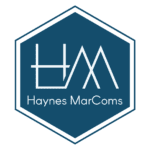Oaky has interviewed seasoned revenue management experts to get you started down the right path with new approaches to generating revenue.
Download the full ebook to get the most out of every bit of business that comes your way.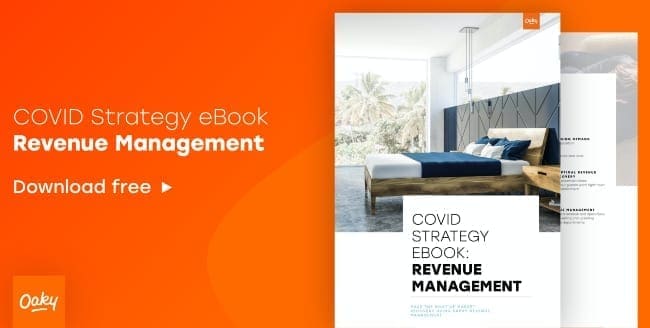
There’s one statement that these experts all agree on: your approach to revenue management will set the stage for the future after these challenging times.
Oaky spoke to Thibault Catala of Catala Consulting, Adrienne Hanna of Right Revenue, Melissa Kalan from ARMA, Annemarie Gubanski from Taktikon and Thomas Greenall of Bespoke Hotels to get their views on what will contribute to optimal performance in a challenging time.
It covers:
- How to intelligently navigate changing demand landscapes
- What you should consider when pricing your rooms and forecasting business
- How and why to shift to total revenue management
Navigate changing demand landscapes to build an understanding of guests’ new needs and preferences
International travel restrictions have led to seismic shifts in booking patterns across most segments. In the markedly different hospitality industry we find ourselves in, updating your segments is an important step in dealing with changing demand landscapes
Prepare for a changing guest profile
- Use website data to help you understand which customers are interested. Check your website traffic in a tool like Google Analytics to see where your site visitors are from. The result will show you which new markets you can reach with geo-targeted marketing activities.
- Analyse PMS data to understand how your segments are changing. Compare past and current data to answer the following questions:
- Which segments have dropped the most?
- Which segments are beginning to recover already?
- Which ones will take longer to return?
- Are you attracting new guest segments? If so, is there room for growth in this area?
Your answers will help you understand which guest segments you served before, if and when you may get them back and whether you can tap into other segments in the meantime.
- Reach new segments to optimise your spread. If your usual guests won’t come back any time soon (e.g. if you normally target international leisure), you should find out who is likely to travel to your area right now. Then think about how you can position yourself to attract these first travellers and get your piece of the pie.
Make sure your distribution is on point
This time offers the opportunity to revisit and optimise your distribution strategy, both in terms of reach and cost.
- Understand whether your current distribution strategy is optimal. Check where you are selling your rooms and identify the best- and worst-performing channels by:
- Recording which channels bring you the most reservations
- Analysing the costs/commissions charged by your channels
- Research new channels. There are countless OTAs which cater to specific markets such as luxury boutique travellers, couples, families, outdoor enthusiasts and many more. Find the ones that reach your target audience to get in front of the right people.
- Push for more direct bookings. If you haven’t been doing this already, start now. Ensure your rates are in parity across your channels and throw in a direct booking bonus like free parking or an F&B voucher. Advertise these bonuses when you market your property and let guests know how much it means to your hotel if they reserve via your website instead of an OTA.
- Collaborate with local partners. Work with local tour operators and other businesses to create an unforgettable experience for your guests. Advertise these partnerships to highlight your unique offering and to show that you’re supporting companies around you.
Use forecasting strategies to build your Plan A and Plan B for revenue management
Revenue managers may have asked themselves the following questions recently:
- Is it worth the effort forecasting with such an unpredictable future ahead of us?
- Should I drop rates to drive business or increase prices to make up for lost revenue?
- How can I manage and reduce costs when there’s low demand?
Oaky has summarised insights on these topics to help you find some answers.
Why you shouldn’t abandon your forecasting practices
While forecasting may seem futile due to the many unpredictable changes in rules, regulations and demand, it’s more important now than ever.
Here are some ways to use forecasting even in a volatile market:
- Outline several scenarios. Creating a single forecast might make you feel secure, but it’s likely you’ll be less able to adapt if things don’t go as planned.
Create a best- and worst-case scenario and medium-case scenario to get an idea of possible outcomes, how these would impact your property and how you can react to them. This way you’ll be better prepared for whatever does happen and will be able to make decisions quickly and confidently.
- Leverage revenue management technology. Revenue management systems (RMS) help you save time and provide deep insights into how demand in your area has been developing. Leverage your experience and knowledge of the industry to interpret this data and refine your forecasts.
- Look at the short term. Government regulations around travel can change daily, triggering rises or drops in demand. Set up a monitoring protocol to track the situation in your home country and key source markets as closely as possible. Focus your forecasting on the short term (4-6 weeks) and be flexible with updates to accommodate sudden changes.
- Predict your operational costs. Apart from showing you how much revenue you will be generating in the coming weeks, your multi-scenario forecast is also an important planning tool for other departments. Key parts of your hotel such as housekeeping, front office, F&B and engineering can use your forecast to schedule staff and purchase supplies. Work closely with them and keep them updated on any changes to help them manage their workloads efficiently and cost-effectively.
Cheaper rates or an escape from daily drudgery?
It might be tempting to slash your rates to attract guests. But is that the solution?
- Don’t blindly drop your rates. This approach may bring limited results in the very short term but recovering from aggressive price drops could take years, harming your profitability in the long run. Avoid joining (or starting) the race to the bottom. Demand is limited now and lowering rates will not increase it.
- Stay true to your brand. Be strategic and keep your branding and price positioning in mind if you decide to lower your rates.
- What does your property stand for?
- Who are your ideal guests?
- How would they perceive steep discounts or radical price reductions?
Answer these questions carefully before going ahead since drastic moves can change how customers perceive you and may even damage your reputation.
- Focus on experiences. Find other ways to offer your guests a bargain, instead of just cutting your rates. This can include creating packages that include several ancillary services like room service breakfast, parking and bicycle rental. Apart from providing extra value, this package can promise great experiences like a leisurely breakfast in the comfort of the room and a fun excursion your guests will remember and probably cherish more than a discount in the long run.
- Use clear messaging on all your channels. Let guests know exactly what they’re getting for their money. You will need to justify your rates, especially if your competitors are discounting.
Highlight the fun, memorable experiences you will give your guests. Focus on things many people missed in the past few months including quality time spent with loved ones, outdoor activities, exploring a new place or simply switching off in a peaceful environment.
- Analyse your market or region. In this unprecedented situation, nobody can accurately provide a roadmap for how to navigate a new business landscape. Use the suggestions above to get ideas for different approaches and find what works best for you in your specific market.
Maximise incremental revenue with a total revenue management approach.
Hoteliers are looking for ways to generate extra revenue during low-occupancy times. In line with this, a shift towards total revenue management is essential.
Understanding your hotel as a whole will help you identify new ways of wowing guests and increasing your total revenue.
- Examine your customers’ buying habits. Take the time to learn where your customers come from, which sales and marketing approaches work best, and which services or products are most popular. Then look for ways to maximise profitable channels through enhanced collaboration or targeted marketing. End by deciding which of the less profitable approaches you want to eliminate.
- Use technology wherever possible. Modern hotel tech and AI-powered solutions can help you save time, get better data insights and make well-informed decisions faster than ever before. Leverage these tools so you can spend less energy on repetitive tasks and focus on refining your strategy instead. Think of it as transforming revenue management from an art into a science.
- Evaluate data from other departments. When you let a tech solution do the data collection and collation work for you, you can analyse more information from your different departments to get insights on their successes and challenges. Use this knowledge to further refine your approach and unlock new revenue-generating ideas.
Take advantage of cross-selling and upselling
Increasing revenue in departments apart from rooms is a big part of total revenue management. Generating more revenue across the board can make a deciding difference in times when cashflow is low.
- Implement a cross-selling and upselling initiative. Use this low-demand period to train staff in upselling guests to higher category rooms and to promote other departments. For example, offer a discount on spa or F&B services if guests book on the day they arrive.
- Streamline upselling and cross-selling with a tech solution. Using an automated upselling platform will save you hours, take pressure off your staff and even allow you to promote offers to guests pre-arrival.
- Create unique offers and deals. Make your upselling and cross-selling initiative more successful by offering your guests fun and exciting deals on top of the usual room upgrades. Let your creativity run wild here. Feel free to test different options to see what your guests enjoy. Doing this lets guests personalise their stay in a way they couldn’t before and ensures they’ll have an unforgettable time.
- Focus on leisure offers. This segment will be the first to recover and these guests are generally more open to upgrading their stay.
Every additional perk to a stay will bring it closer to becoming an unforgettable experience for your clientele. Place your USP at the fore of your brainstorming process to delight your guests and generate additional revenue when it matters most.





















